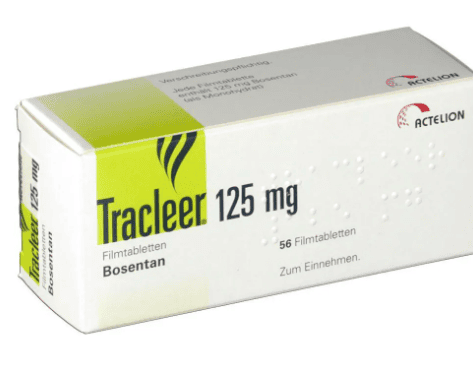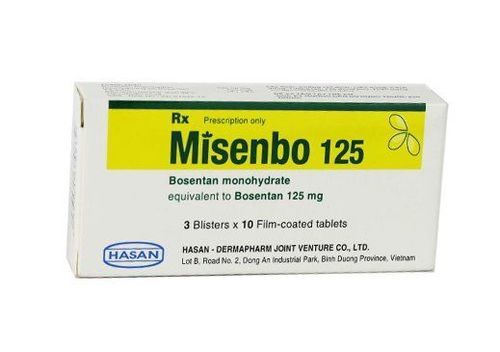This is an automatically translated article.
The article is professionally consulted by Master, Doctor Do Xuan Chien and Master, Doctor Hoang Thi Hoa - Department of Medical Examination and Internal Medicine - Vinmec Ha Long International General Hospital.Pulmonary hypertension is a disease in which there is an increase in pulmonary artery blood pressure, which can occur at any age, from infants to the elderly. If not diagnosed and treated early, the disease often has a severe prognosis and very serious complications. The following article will help you learn the diagnostic criteria for pulmonary hypertension.
1. What is pulmonary hypertension?
Pulmonary hypertension (or pulmonary hypertension) is a form of hypertension that affects only the pulmonary artery and the right side of the heart. Normal pulmonary arterial pressure at rest is 15 mmHg, which is called pulmonary hypertension when the average adult pulmonary arterial pressure at rest is >25 mmHg (as assessed through cardiac catheterization).In pulmonary arterial hypertension, the pulmonary arteries and capillaries are narrowed, blocked, or destroyed. To pump blood through the lungs, the ventricles have to work harder, the heart muscle weakens and eventually fails completely. This is a serious disease that cannot be completely cured, but with early diagnosis and timely intervention, it can help reduce symptoms and improve the quality of life of patients.

2. Causes of pulmonary hypertension
Pulmonary hypertension is divided into two types, primary pulmonary hypertension and secondary pulmonary hypertension. Primary pulmonary hypertension is pulmonary hypertension of unknown etiology. Secondary pulmonary hypertension occurs due to a number of diseases such as:Congenital heart disease, systolic heart failure, diastolic heart failure, heart valve disease (mitral stenosis); Thrombosis of central pulmonary artery, thromboembolism of peripheral pulmonary artery; Chronic obstructive pulmonary disease, hypoventilation disorder, pulmonary fibrosis, blood clots in the lungs (pulmonary embolism); Sleep apnea and other sleep disorders; Cirrhosis, AIDS; Due to the use of stimulants such as cocaine.
3. Diagnostic criteria for pulmonary hypertension
To diagnose pulmonary hypertension, the following diagnostic criteria for pulmonary hypertension can be applied:Clinical examination:
Functional symptoms: Patient fatigue, exertional dyspnea, chest pain; On physical examination, there are signs: distended jugular vein, weak carotid pulse, auscultation with strong T2 in the pulmonary valve fossa, diastolic murmur due to pulmonary valve regurgitation, systolic murmur due to retrograde regurgitation due to regurgitation. Tricuspid valve is open. Patients have edema, peripheral cyanosis, hepatomegaly, ascites when in the final stage of the disease. Laboratory tests and imaging:
Doppler echocardiography: This is a common, accurate and easy-to-implement method of measuring pulmonary artery blood pressure. Through echocardiography of pulmonary hypertension, three parameters can be determined: systolic pulmonary artery pressure, mean pulmonary artery pressure and diastolic pulmonary artery pressure. Echocardiography helps to estimate mean pulmonary arterial pressure in pulmonary hypertension of > 25 mmHg; Chest X-ray: If the patient has pulmonary hypertension, the diameter of the inferior pulmonary artery will be >16mm; Electrocardiogram: Electrocardiographic images in patients with pulmonary hypertension are: right axis, right ventricular hypertrophy, right atrium; Pulmonary disease in II, III, aVF; R is high in V1, P sóng2/3 is deep in R, and S is deep in V6, apex of the heart is radiating posteriorly; Cardiac catheterization: The most accurate diagnostic procedure for pulmonary hypertension. The catheter is placed into a vein in the neck, then threaded into the right ventricle and pulmonary artery. Cardiac catheterization allows direct measurement of pressure in the pulmonary artery and right ventricle.

4. Who should be screened for pulmonary hypertension?
Pulmonary hypertension, if not diagnosed and treated promptly, can cause very serious complications that can lead to death such as: increased likelihood of blood clots forming in the pulmonary arteries, pulmonary infarction. . should be ignored. By the time symptoms appear, the disease is often already in a severe stage and difficult to treat. Therefore, the following high-risk subjects should go to medical facilities for screening:People with a family history of pulmonary hypertension; Patients with congenital heart disease, patients with a history of portal hypertension, cirrhosis; Patients with lupus erythematosus, scleroderma; HIV-infected patients, People who are not at high risk but have the following symptoms should also be screened for pulmonary hypertension:
Shortness of breath; Fatigue, chest pain, muscle weakness, fainting, indigestion, abdominal distension; High left breastbone, heart murmur, edema, hepatomegaly,... For the most accurate results of pulmonary hypertension screening, you should choose reputable and quality hospitals. comprehensive in terms of professional qualifications, medical equipment and services. Accordingly, Vinmec International General Hospital is a medical facility that fully meets these requirements. Currently, at Vinmec, there is a team of Cardiology specialists who are professors, doctors, and specialists with high expertise and experience, well-trained at home and abroad. In addition, Vinmec constantly invests and upgrades the system of modern and modern equipment and machines to support the most intensive diagnosis and treatment, bringing good results. Vinmec medical system is managed and operated according to international standards throughout the country, worthy of being a reliable medical examination and treatment address, where customers receive medical services with the highest satisfaction.
Please dial HOTLINE for more information or register for an appointment HERE. Download MyVinmec app to make appointments faster and to manage your bookings easily.














